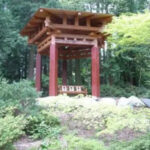In the heart of Kansas, where sprawling plains meet the sky, lies an extraordinary landscape sculpted by time and water: Monument Rocks in Gove County. These remarkable formations, also known as the Chalk Pyramids, stand as silent sentinels, starkly contrasting with the surrounding flatlands and offering a glimpse into a distant past when this region was submerged beneath a vast inland sea. These towering chalk pillars are not just visually stunning; they are geological storytellers, whispering tales of the Cretaceous period and the ancient seabed that once lay here.
Millions of years ago, during the Cretaceous period, a shallow sea covered much of what is now central North America. Within this sea, countless microscopic marine organisms thrived, their skeletal remains gradually settling on the ocean floor. Over eons, this accumulation of fine, oozy sediment, deposited at a glacial pace of just a fraction of a millimeter per year, compacted and solidified into the chalk that forms Monument Rocks today. Layer upon layer, this chalky sediment built up to hundreds of feet thick, eventually being buried under more recent geological strata. Later, relentless erosion, driven by wind and water, sculpted away the overlying layers, revealing the resistant chalk formations. The very top layers of Monument Rocks benefited from a natural cementation process, likely due to dissolved minerals, which provided an extra layer of protection against erosion, preserving these unique structures for us to witness today.
Geologically, Monument Rocks are part of the Smoky Hill Chalk Member, a significant component of the larger Niobrara Chalk formation. Despite its name, Niobrara Chalk isn’t exclusively chalk; it includes variations such as chalky limestone and chalky shale. At Monument Rocks, you can observe these subtle variations within the layers, each telling a slightly different story of the ancient marine environment.
Beyond their geological significance, Monument Rocks have also gained renown for the incredible fossils discovered in the surrounding chalk beds since the 19th century. These fossil finds have included massive marine reptiles like mosasaurs and plesiosaurs, flying pterosaurs, toothed aquatic birds, enormous fish, and giant clams. While fossils are less frequently found directly at Monument Rocks compared to other nearby outcrops along the Smoky Hill River and its tributaries, the area remains a significant paleontological site, adding another layer of intrigue to this already fascinating location.
Although Monument Rocks National Landmark is situated on private land, the generous landowners welcome visitors to experience this natural wonder. A visit to Monument Rocks in Gove County is a journey back in time, an opportunity to witness the power of geological processes, and to marvel at the unique beauty of Kansas’s chalk pillars.

